 W
WThomas Abernethy was a Scottish seafarer, gunner in the Royal Navy, and polar explorer. Because he was neither an officer nor a gentleman, he was little mentioned in the books written by the leaders of the expeditions he went on, but was praised in what was written. In 1857, he was awarded the Arctic Medal for his service as an able seaman on the 1824–25 voyage of HMS Hecla, the first of his five expeditions for which participants were eligible for the award. He was in parties that, for their time, reached the furthest north, the furthest south (twice), and the nearest to the South Magnetic Pole. In 1831, along with James Clark Ross's team of six, Abernethy was in the first party ever to reach the North Magnetic Pole.
 W
WDouglas "Doug" Allan, FRSGS, is a Scottish wildlife cameraman and photographer best known for his work in polar regions and underwater.
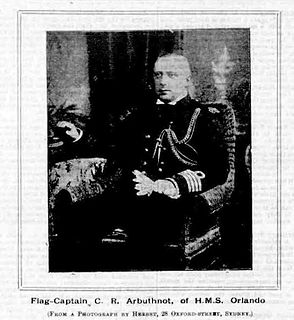 W
WAdmiral Charles Ramsay Arbuthnot was an officer of the British Royal Navy.
 W
WAlbert Borlase Armitage was a Scottish polar explorer and officer in the Merchant Navy.
 W
WEdward Leicester Atkinson, was a Royal Navy surgeon and Antarctic explorer who was a member of the scientific staff of Captain Scott's Terra Nova Expedition, 1910–13. He was in command of the expedition's base at Cape Evans for much of 1912, and led the party which found the tent containing the bodies of Scott, "Birdie" Bowers and Edward Wilson. Atkinson was subsequently associated with two controversies: that relating to Scott's orders concerning the use of dogs, and that relating to the possible incidence of scurvy in the polar party. He is commemorated by the Atkinson Cliffs on the northern coast of Victoria Land, Antarctica, at 71°18′S 168°55′E.
 W
WEdward Frederick Robert Bage was an Australian polar explorer with Douglas Mawson's Australasian Antarctic Expedition in 1912, and a soldier with the Royal Australian Engineers during World War I.
 W
WLouis Charles Bernacchi was an Australian physicist and astronomer best known for his role in several Antarctic expedition.
 W
WFrancis Howard Bickerton was an English treasure hunter, Antarctic explorer, soldier, aeronaut, entrepreneur, big-game hunter and movie-maker. He not only made a major contribution to the Australasian Antarctic Expedition of 1911–1914 but was also recruited for Sir Ernest Shackleton's "Endurance" Expedition; he fought with the infantry, the Royal Flying Corps and the Royal Air Force in both world wars and was wounded on no fewer than four separate occasions. According to his obituary in The Times, "His loyalty to his friends, his gallantry... and the unembittered courage with which he continued to meet the difficulties of a world which gave little recognition in peace to men of his mould – leave to us who shared in one way or another his various life the memory of a rich, rewarding and abiding spirit".
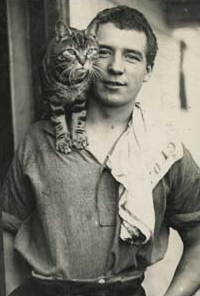 W
WPerce Blackborow was a Welsh sailor and a stowaway on Ernest Shackleton's ill-fated Imperial Trans-Antarctic Expedition of 1914–1917.
 W
WKenneth Victor Blaiklock OBE was a British Antarctic surveyor who took part in Sir Vivian Fuchs's Commonwealth Trans-Antarctic Expedition that completed the first overland crossing of Antarctica. During this expedition, he reached the South Pole by dog sled for the first time since Amundsen. He was awarded the Polar Medal with three bars. His daughter is British politician, Catherine Blaiklock.
 W
WArthur Harry Blissett, was a Lance Corporal, Royal Marine who joined Captain Robert Falcon Scott on the Discovery expedition of 1901–1904.
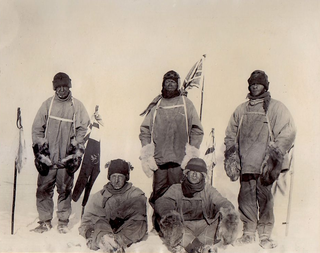 W
WHenry Robertson Bowers was one of Robert Falcon Scott's polar party on the ill-fated Terra Nova expedition of 1910–1913, all of whom died during their return from the South Pole.
 W
WThomas Crean was an Irish seaman and Antarctic explorer who was awarded the Albert Medal for Lifesaving.
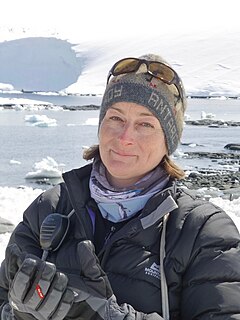 W
WKim Crosbie FRSGS is a former Executive Director of the International Association of Antarctica Tour Operators (IAATO) and has been working in the polar regions since 1991.
 W
WJohn King Davis was an English-born Australian explorer and navigator notable for his work captaining exploration ships in Antarctic waters as well as for establishing meteorological stations on Macquarie Island in the subantarctic and on Willis Island in the Coral Sea.
 W
WFrank Debenham, OBE was Emeritus Professor of Geography at the Department of Geography, Cambridge University and first director of the Scott Polar Research Institute.
 W
WJulian A. Dowdeswell is a British glaciologist and is the Director of the Scott Polar Research Institute and a Professor of Physical Geography in the Department of Geography at the University of Cambridge.
 W
WPetty Officer Edgar Evans was a Welsh naval seaman and member of the "Polar Party" in Robert Falcon Scott's ill-fated Terra Nova Expedition to the South Pole in 1911–1912. This group of five men, personally selected for the final expedition push, attained the Pole on 17 January 1912. The party perished as they attempted to return to the base camp.
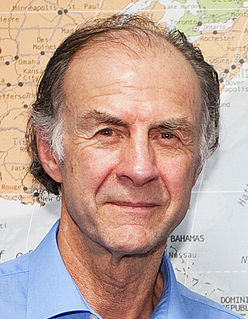 W
WSir Ranulph Twisleton-Wykeham-Fiennes, 3rd Baronet,, commonly known as Sir Ranulph Fiennes, and sometimes as Ran Fiennes, is a British explorer and holder of several endurance records. He is also a writer, poet and co-creator of Sir Ranulph Fiennes' Great British Rum.
 W
WSir Vivian Ernest Fuchs was an English explorer whose expeditionary team completed the first overland crossing of Antarctica in 1958.
 W
WJens Tryggve Herman Gran was a Norwegian aviator, explorer and author. He was the skiing expert on the 1910–13 Scott Antarctic Expedition and was the first person to fly across the North Sea in a heavier-than-air aircraft.
 W
WCharles Green, also known as Charlie Green, was a British ship's cook, who took part in Sir Ernest Shackleton's Imperial Trans-Antarctic Expedition as the cook for the Weddell sea party on board the Endurance. The son of a master baker, Charles learnt to bake, but ran away at the age of 22 to join the Merchant Navy. At an unknown time in his life, Green had an accident which resulted in the loss of one of his testicles. This resulted in Green having a somewhat squeaky and high-pitched voice, which was the source of jokes amongst his fellow crew aboard the Endurance. Whilst in Buenos Aires on board the Andes in October 1914, he heard word that Shackleton had fired the expedition's cook, for drunkenness, and was subsequently hired.
 W
WLionel Greenstreet (1889–1979) was the first officer of the Endurance and a member of the Imperial Trans-Antarctic Expedition of 1914–1917, for which he was awarded the Polar Medal. When he died on 13 January 1979, he was the last survivor of the Weddell Sea party within the expedition.
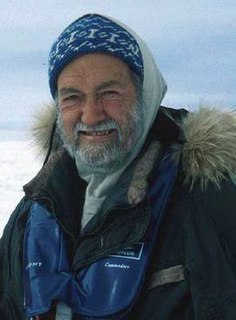 W
WSir Walter William Herbert was a British polar explorer, writer and artist. In 1969 he became the first man fully recognized for walking to the North Pole, on the 60th anniversary of Robert Peary's famous, but disputed, expedition. He was described by Sir Ranulph Fiennes as "the greatest polar explorer of our time".
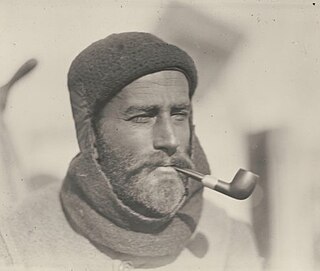 W
WCharles Archibald Brookes Hoadley was an Australian geologist. He graduated from the University of Melbourne in 1911 with a degree in mining engineering, and was a member of the Australasian Antarctic Expedition led by Sir Douglas Mawson from 1911 to 1914. Hoadley was a member of the Western Base Party. Cape Hoadley was named after him upon discovery by the exploration party.
 W
WJames Francis "Frank" Hurley was an Australian photographer and adventurer. He participated in a number of expeditions to Antarctica and served as an official photographer with Australian forces during both world wars.
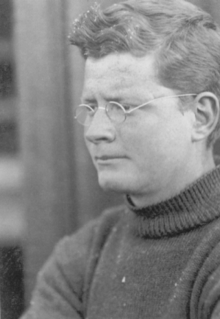 W
WReginald William James, FRS was a student, researcher, and teacher of physics in England and South Africa. He is best known for his service in the Imperial Trans-Antarctic Expedition of 1914–1916, for which he was awarded the Silver Polar Medal.
 W
WErnest Edward Mills Joyce AM was a Royal Naval seaman and explorer who participated in four Antarctic expeditions during the Heroic Age of Antarctic Exploration, in the early 20th century. He served under both Robert Falcon Scott and Ernest Shackleton. As a member of the Ross Sea party in Shackleton's Imperial Trans-Antarctic Expedition, Joyce earned an Albert Medal for his actions in bringing the stricken party to safety, after a traumatic journey on the Great Ice Barrier. He was awarded the Polar Medal with four bars, one of only two men to be so honoured, the other being his contemporary, Frank Wild.
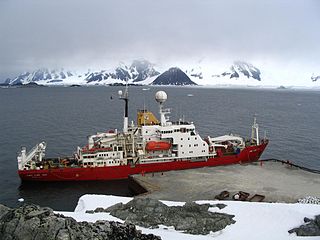 W
WRobert David Larter is a British marine geophysicist with the British Antarctic Survey and a recipient of the Polar Medal.
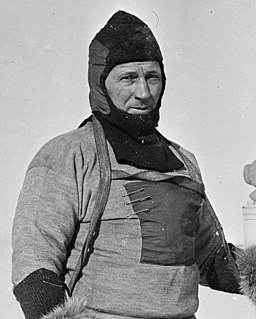 W
WWilliam Lashly was a Royal Navy seaman who served as lead stoker on both the Discovery expedition and the Terra Nova expedition to Antarctica, for which he was awarded the Polar Medal. Lashly was also recognised with the Albert Medal for playing a key role in saving the life of a comrade on the second of the two expeditions.
 W
WGeorge Murray Levick was a British Antarctic explorer, naval surgeon and founder of the Public Schools Exploring Society.
 W
WDenis Gascoigne Lillie was a British biologist who participated in the Terra Nova Expedition (1910–1913) to the Antarctic. He collected numerous marine animals as well as plants and fossils–many of which were new to science–and published scientific papers on whales, fossils, and medicine. He received the Polar Medal along with other Terra Nova members in 1913. He was also a noted caricaturist who made cartoons of professors, colleagues, and friends: some of his caricatures are collected in the National Portrait Gallery. He worked as a government bacteriologist during World War I and then suffered a severe mental breakdown, spending three years at Bethlem Royal Hospital and never fully recovering. He is commemorated in the names of several marine organisms as well as Lillie Glacier in Antarctica.
 W
WKenneth Norman MacKenzie was an officer in the merchant fleet known for his role in the British Australian and New Zealand Antarctic Research Expedition, for which he was awarded a Polar Medal.
 W
WAeneas Lionel Acton Mackintosh was a British Merchant Navy officer and Antarctic explorer, who commanded the Ross Sea party as part of Sir Ernest Shackleton's Imperial Trans-Antarctic Expedition, 1914–1917. The Ross Sea party's mission was to support Shackleton's proposed transcontinental march by laying supply depots along the latter stages of the march's intended route. In the face of persistent setbacks and practical difficulties, Mackintosh's party fulfilled its task, although he and two others died in the course of their duties.
 W
WTimothy 'Tim' McCarthy was an Irish able seaman (AB). He is best known for his service in the Imperial Trans-Antarctic Expedition of 1914–1916, for which he was awarded the Bronze Polar Medal.
 W
WArthur Fleming Morrell was British officer of the Royal Navy, an explorer, and Commandant of Ascension Island, who saw service spanning the end of the Napoleonic era and well into the Victorian era.
 W
WClarence Petersen de la Motte was a sailor originally from Bulli, New South Wales. During his early career, he served aboard the New Zealand barque Northern Chief and the steamship Warrimoo. From 1911 to 1914, during the Australasian Antarctic expedition, he served as Third Officer aboard the SY Aurora, under John King Davis.
 W
WAdmiral Edward Ratcliffe Garth Russell Evans, 1st Baron Mountevans, was a Royal Navy officer and Antarctic explorer.
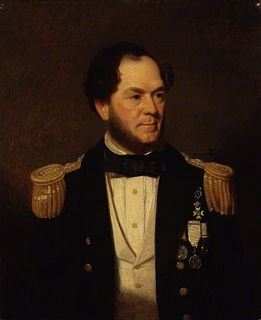 W
WAdmiral Sir Erasmus Ommanney was a Royal Navy officer and an Arctic explorer of the Victorian era.
 W
WCaptain Robert Edward Dudley Ryder was a Royal Navy officer and a British recipient of the Victoria Cross, the highest award for gallantry in the face of the enemy that can be awarded to British and Commonwealth forces. He became a Conservative Member of Parliament after retiring from the navy.
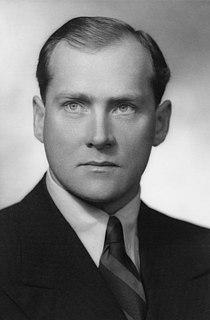 W
WJohn Riddoch Rymill was an Australian polar explorer, who had the rare second clasp added to his Polar Medal.
 W
WRobert Falcon Scott was a Royal Navy officer and explorer who led two expeditions to the Antarctic regions: the Discovery expedition of 1901–1904 and the ill-fated Terra Nova expedition of 1910–1913. On the first expedition, he set a new southern record by marching to latitude 82°S and discovered the Antarctic Plateau, on which the South Pole is located. On the second venture, Scott led a party of five which reached the South Pole on 17 January 1912, less than five weeks after Amundsen's South Pole expedition.
 W
WSir Ernest Henry Shackleton was an Irish Antarctic explorer who led three British expeditions to the Antarctic. He was one of the principal figures of the period known as the Heroic Age of Antarctic Exploration.
 W
WWilliam Joseph Lambart Sladen MBE was a Welsh American naturalist who was an Antarctic explorer and a specialist on polar bird life. He was professor emeritus at Johns Hopkins University in the United States. He researched the mating of Antarctic birds and received the Polar Medal. Two mountains on the continent, Mount Sladen and Sladen Summit, are named in his honour. His discovery in the 1960s that DDT residues could be found in adelie penguins contributed to the banning of DDT in the U.S.
 W
WGeoffrey Usher Somers MBE is a British explorer, particularly of the polar regions. He was the first Briton to cross Antarctica on foot, and has an Antarctic peak named in his honour, Somers Nunatak. In 1992 he was awarded the MBE for services to outdoor education and polar exploration, and in 1996 the Polar Medal for his contributions to polar exploration.
 W
WCommander Joseph Russell Stenhouse, DSO, OBE, DSC, RD, RNR (1887–1941) was a Scottish-born seaman, Royal Navy Officer and Antarctic navigator, who commanded the expedition vessel SY Aurora during her 283-day drift in the ice while on service with the Ross Sea Party component of Sir Ernest Shackleton's Imperial Trans-Antarctic Expedition in 1914–17. After Aurora's escape from the ice he brought her safely to New Zealand, but was thereafter replaced as the vessel's commander. He later served with distinction in the Royal Navy during both World Wars.
 W
WSir Henry Frederick Stephenson was a Royal Navy officer, courtier, and Arctic explorer.
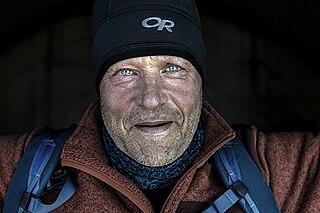 W
WRobert Charles Swan, OBE, FRGS is the first person to walk to both Poles.
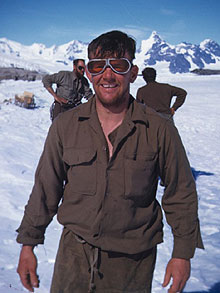 W
WEric William Kevin Walton, known as Kevin Walton, was an officer in the Royal Navy during World War II and, in 1946, was a winner of the Albert Medal, which in 1971 was superseded by the George Cross.
 W
WHenry George "Gino" Watkins FRGS was a British Arctic explorer and nephew of Bolton Eyres-Monsell, 1st Viscount Monsell.
 W
WHenry Ernest Wild AM, known as Ernest Wild, was a British Royal Naval seaman and Antarctic explorer, a younger brother of Frank Wild. Unlike his more renowned brother, who went south on five occasions, Ernest Wild made only a single trip to the Antarctic, as a member of the Ross Sea party in support of Sir Ernest Shackleton's Imperial Trans-Antarctic Expedition, 1914–17. He was one of the group of ten who were stranded ashore when the expedition's ship was blown from its moorings in a gale and were forced to improvise in order to survive. He played a full part in the party's main depot-laying journey, 1915–16, and in recognition of his efforts to save the lives of two comrades on that journey, he was posthumously awarded the Albert Medal. Having survived the expedition, he died while on active service with the Royal Navy in the Mediterranean Sea in March 1918.
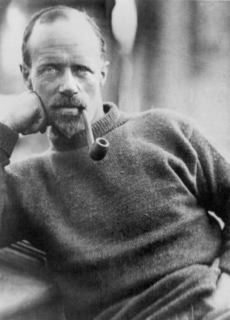 W
WJohn Robert Francis Wild, known as Frank Wild, was an English sailor and explorer. He participated in five expeditions to Antarctica during the Heroic Age of Antarctic Exploration, for which he was awarded the Polar Medal with four bars, one of only two men to be so honoured, the other being Ernest Joyce.
 W
WEdward Adrian Wilson was an English polar explorer, ornithologist, natural historian, physician and artist.
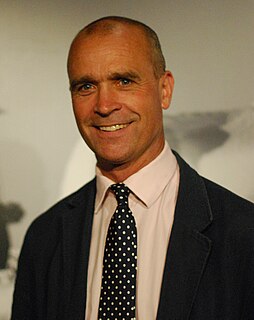 W
WLieutenant Colonel Alastair Edward Henry Worsley, was a British explorer and British Army officer. He was part of the successful 2009 expedition that retraced Ernest Shackleton's footsteps in the Antarctic.